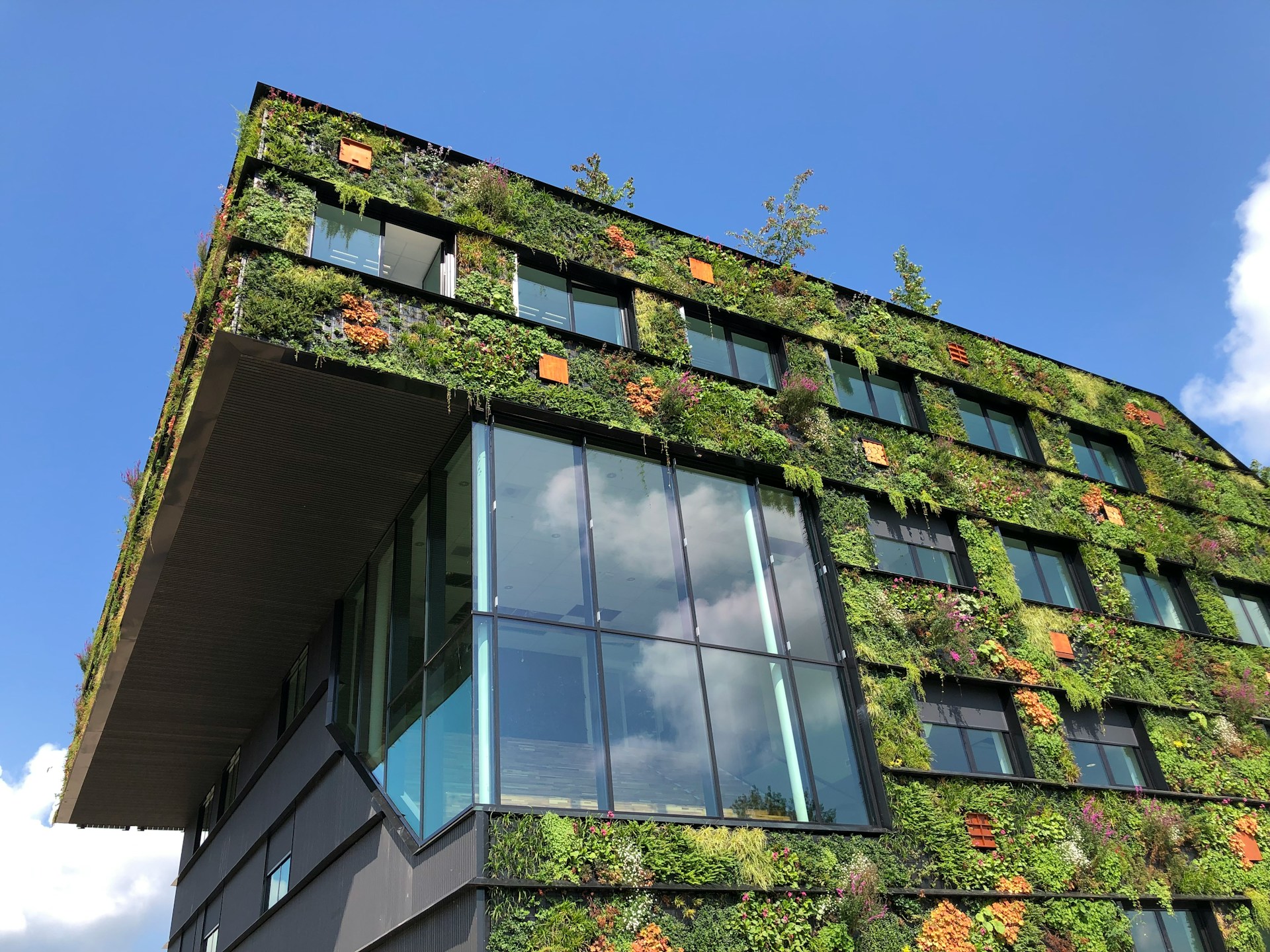The Future of Construction: AI and Sustainable Materials
With the increased awareness of occurrence of climate change, global depletion of resources and hence the need to construct environmentally friendly structures, construction industry across the world is experiencing a significant innovation shift.
AI and sustainable materials are one of the leaders of this revolution.
Advanced technologies with the help of AI lead towards more effective and efficient designing, constructing as well as the maintenance of structures and constructions the use of new environment friendly materials also decrease the harms of construction.
This blog is focused on the role of AI and sustainable materials in construction and the use of sustainable material.
AI in Construction: Bringing the Building Revolution
The use of AI is now assuming a new domain in the construction industry as it seeks to eliminate waste in the sector.
It has found applications in right from the design phase of the projects and in the completion phase, improving efficiency and providing accuracy.
1. Smart Design and Planning:
Modern visualization instruments, such as BIM, allow architects and engineers to build elaborate three-dimensional models.
These models incorporate inputs from the environment to enhance a product’s energy intensity and material consumption.
2. Automation on Construction Sites:
Robots and drones that are driven by artificial intelligence are being used in functions such as bricklaying, concreting and site surveying.
Not only does this make construction much faster but it also decreases the likelihood of human mistakes and increases safety.
3. Predictive Analytics:
Computer programs use numerical analyses to estimate project schedules, estimations, and indicated risks.
This enables the project managers to plan for their project and hence compensate for loss of time due to interruptions
4. Sustainability Metrics:
Automated programs can quantify the environmental cost of a project, with regards to carbon footprint and energy, and assist the builders in achieving green objectives.
The use of AI can lead to the improvement of construction projects’ speed and safety, as well as embrace the concepts of an environmentally friendly future.
Sustainable Materials: Building a Greener Future
Among the key success factors, material selection has a critical role to minimize carbon emission in construction works.
Sustainability materials are some of the best because they are environmentally friendly, yet hard wearing and energy conservation.
1. Recycled and Upcycled Materials:
It is also observed that used material such as recycled steel, used wood and SCRAP plastics are being sourced to lessen waste and depletion of virgin resources.
2. Biodegradable Options:
Some of the bio concrete substitutes include mushroom-based mycelium bricks together with the hemp Crete that are environmentally friendly than the normal concrete and bricks.
3. Energy-Efficient Materials:
Aerogel and phase change material (PCM) increase insulation efficiency and thereby help to minimize energy utilization in structures.
4. Carbon-Negative Materials:
Carbon-positive materials such as the carbon-absorbing concrete and bio char do not merely have a low carbon footprint themselves, they remove carbon dioxide from the atmosphere.
The use of sustainable materials and computer control and optimization technologies also helped to minimize the negative impact on the environment during construction without affecting the performance characteristics or the resource potential of structures.
AI’s Benefits for Sustainable Materials
The greatest strength of AI and sustainable material in construction is only fully realised when it is applied in parallel with sustainable materials.
Altogether they present unparalleled possibilities to experiment and to be a steward of the environment.
1. Material Selection Optimization:
AI programs can use data on the material characteristics, cost, and others to suggest the best way to go with a particular project that is sustainable and cheaper.
2. Real-Time Monitoring of Materials:
AI systems, through sensors and IoT devices, can assess the performance and deteriorating characteristics of the material in use and extend durability to minimise material wastage.
3. Waste Reduction:
With the help of AI and Machine Learning applied to design the right construction tools can avoid waste and contributing to give second life to some of the materials.
4. Lifecycle Analysis:
AI can generate an understanding of the whole life cycle of a building from its construction to its deconstruction and can show how sustainable material is used optimally.
They enable construction companies to meet the goal of sustainability in their practices, costs plus the general performance.

Challenges and the Road Ahead
Despite the potential benefits that AI can afford sustainable materials industries, the following are some of the problems though that need to be solved to make them universal across industries.
1. High Initial Costs:
On the one hand, sometimes there are considerable investments required when implementing AI technologies and the same is with sustainable materials.
2. Lack of Skilled Workforce:
The deployment of AI systems is best done by experts who in the construction industry, there is a lack of these experts.
3. Regulatory Barriers:
Ordinance and standards always get adjusted at a slower rate compared to technological development; therefore, implementation of new products and strategies encounters a lot of hurdles.
4. Scalability:
Innovative industries and artificial intelligence work well on mid or small-scale projects, but large-scale projects are still a problem.
However, the existing barriers are not impeding progress as technology and policy support provide a way forward and bring forth AI as sustainable materials become mainstream in construction.
Conclusion
The advancement of AI technology with sustainable constructions is revolutionizing construction and providing and providing solutions to some of the most daunting environmental and operations problems.
Therefore adopting the AI technologies as well as Eco-friendly material it is possible to bring down the carbon footprint of the industry while still conforming to the predetermined levels of efficiency and safety.
Of course, there are a lot of challenges, but the positive trend and the active development of new solutions by key stakeholders underline that these achievements will become a new standard soon.
From the above solutions we can decipher futuristic construction as smart, sustainable, and powered by the synergy between AI and green material.
Also read: The Use of Geothermal Energy in Building Material Production

